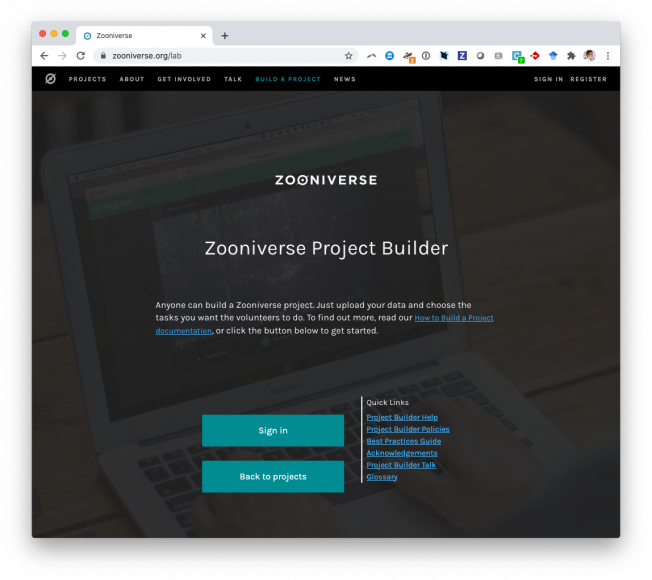Editorial: Living Articles
The Astrophysical Journal American Astronomical Society 868:2 (2018) 78
Doing Good Online: The Changing Relationships Between Motivations, Activity, and Retention Among Online Volunteers
Nonprofit and Voluntary Sector Quarterly SAGE Publications 47:5 (2018) 1031-1056
Time-lapse imagery and volunteer classifications from the Zooniverse Penguin Watch project.
Scientific data (2018)
Abstract:
Automated time-lapse cameras can facilitate reliable and consistent monitoring of wild animal populations. In this report, data from 73,802 images taken by 15 different Penguin Watch cameras are presented, capturing the dynamics of penguin (Spheniscidae; Pygoscelis spp.) breeding colonies across the Antarctic Peninsula, South Shetland Islands and South Georgia (03/2012 to 01/2014). Citizen science provides a means by which large and otherwise intractable photographic data sets can be processed, and here we describe the methodology associated with the Zooniverse project Penguin Watch, and provide validation of the method. We present anonymised volunteer classifications for the 73,802 images, alongside the associated metadata (including date/time and temperature information). In addition to the benefits for ecological monitoring, such as easy detection of animal attendance patterns, this type of annotated time-lapse imagery can be employed as a training tool for machine learning algorithms to automate data extraction, and we encourage the use of this data set for computer vision development.Integrating human and machine intelligence in galaxy morphology classification tasks
Monthly Notices of the Royal Astronomical Society Blackwell Publishing Inc. (2018)
Abstract:
Quantifying galaxy morphology is a challenging yet scientifically rewarding task. As the scale of data continues to increase with upcoming surveys, traditional classification methods will struggle to handle the load. We present a solution through an integration of visual and automated classifications, preserving the best features of both human and machine. We demonstrate the effectiveness of such a system through a re-analysis of visual galaxy morphology classifications collected during the Galaxy Zoo 2 (GZ2) project. We reprocess the top level question of the GZ2 decision tree with a Bayesian classification aggregation algorithm dubbed SWAP, originally developed for the Space Warps gravitational lens project. Through a simple binary classification scheme we increase the classification rate nearly 5-fold, classifying 226,124 galaxies in 92 days of GZ2 project time while reproducing labels derived from GZ2 classification data with 95.7% accuracy. We next combine this with a Random Forest machine learning algorithm that learns on a suite of nonparametric morphology indicators widely used for automated morphologies. We develop a decision engine that delegates tasks between human and machine, and demonstrate that the combined system provides at least a factor of 8 increase in the classification rate, classifying 210,803 galaxies in just 32 days of GZ2 project time with 93.1% accuracy. As the Random Forest algorithm requires a minimal amount of computation cost, this result has important implications for galaxy morphology identification tasks in the era of Euclid and other large scale surveys.Normal black holes in bulge-less galaxies: the largely quiescent, merger-free growth of black holes over cosmic time
Monthly Notices of the Royal Astronomical Society Oxford University Press 476:2 (2018) 2801-2812



